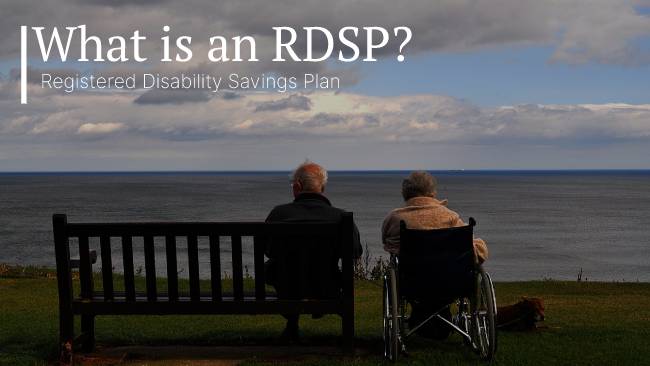What is a Registered Disabilty Savings Plan?

What is an RDSP?
A Registered Disability Savings Plan (RDSP) is a government program to help Canadians with disabilities and help their families save for future medical and living costs. Like an RESP, investment income is tax-deferred.
To help your savings grow faster, the government provides grants and bonds. Income earned grows on a tax-deferred basis until the funds are withdrawn Contributions can be up to a lifetime limit of $200,000.
Annual withdrawals, or Lifetime Disability Assistance Payments (LDAPs), begin by the end of the year in which the beneficiary turns 60. These annual payments will then continue for the life of the beneficiary.
IMPORTANTAs there are are quite a few requirements to qualify for this plan ,you need to discuss it thoroughly with your broker.
12 Questions To Ask
- Who is eligible for an RDSP?
- Who is eligible to be a beneficiary?
- Who can be an RDSP Holder?
- Who can be a contributor to an RDSP?
- What are the investment choices for a RDSP?
- What is a Canada Disability Savings Grant?
- What is a Canada Disability Savings Bond?
- Are repayments necessary?
- Can the contribution be taxed deducted?
- Is there a maximum I can contribute?
- How do I make withdrawals?
- Do I declare income withdrawals?
- We supply you with the best investments in Canada as our brokers represent all the best financial institutions in Canada. For personal assistance on your RDSP or Annuity please EMAIL US
Registered Disability Savings Plans (RDSPs) help Canadians with disabilities and their families save toward long-term financial security.
To be eligible to receive the Disability Tax Credit (DTC) you must be a Canadian resident under the age of 60 at the time contributions are made and have a valid Social Insurance Number (SIN).
A legal parent, guardian, tutor or curator of the beneficiary; an individual who is legally authorized to act on behalf of the beneficiary; a public department, agency or organization that is legally authorized to act on behalf of the beneficiary.
A contributor can be the plan holder, as well as friends and family who have the written permission of the plan holder.
A wide range of mutual and segregated funds.
An RDSP is eligible for the Canada Disability Savings Grant (CDSG). Depending on your family’s net income and the amount contributed, there are benefits from matching grants of 100%, 200% or 300% — up to a lifetime limit of $70,000 per RDSP beneficiary (as shown in the chart below). Grants will be paid into an RDSP up to the end of the year in which the beneficiary turns 49.
The RDSP may also be eligible for the Canada Disability Savings Bond (CDSB) — which pays up to $1,000 per year — whether or not RDSP contributions are made. Bonds will be paid into an RDSP up to the end of the year in which the beneficiary turns 49, and up to a lifetime limit of $20,000.
An RDSP withdrawal cannot be paid if it causes the value of the RDSP to fall below the total amount of grants and bonds that have been paid into the plan within the last 10-year period less any amount of grants and bonds paid in that period that has been repaid to the government.
While withdrawals from the plan can be made at any time for the benefit of the beneficiary, it is very important to note that any grant or bond received within 10 years prior to a payment must be repaid, as the plan is intended to encourage long-term savings .
Contributions are made with after-tax dollars and are not tax-deductible. As well — Contributions can be up to a lifetime limit of $200,000. Deposits and contributions can be made up until the end of the year the beneficiary turns 59.
The maximum transfer amount is $200,000; this amount is reduced by all contributions and rollover transfers that have previously been made to any RDSP.
Withdrawals is known as Disability Assistance Payments (DAPs) and can be paid to the beneficiary any time after the RDSP is established.
Amounts paid include a blend of taxable and non-taxable amounts. The CDSG, CDSB and income components are fully taxable to the beneficiary, while the contribution component is not taxed.
